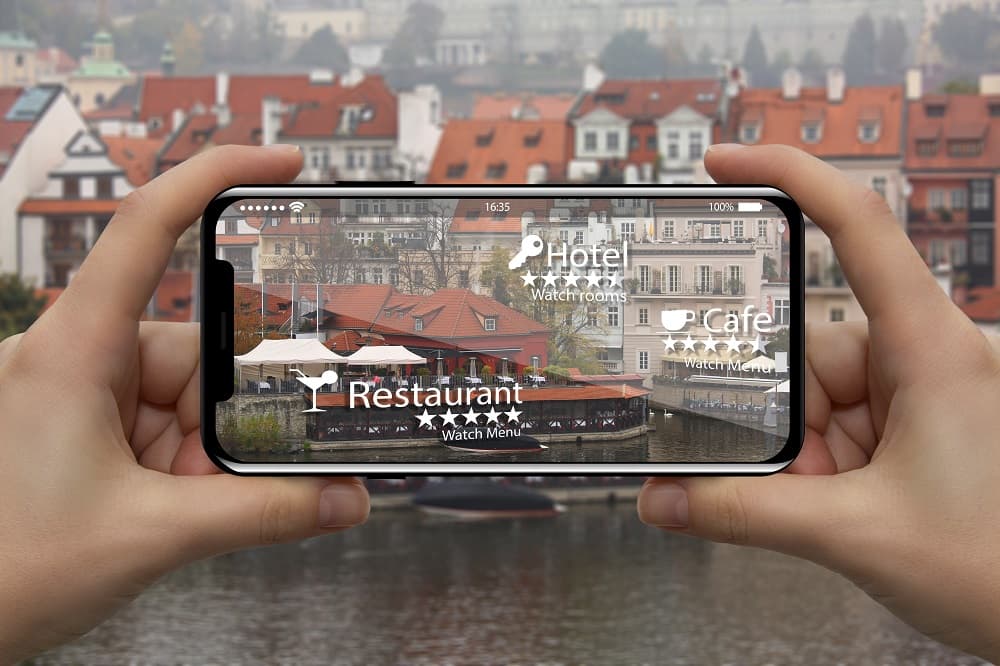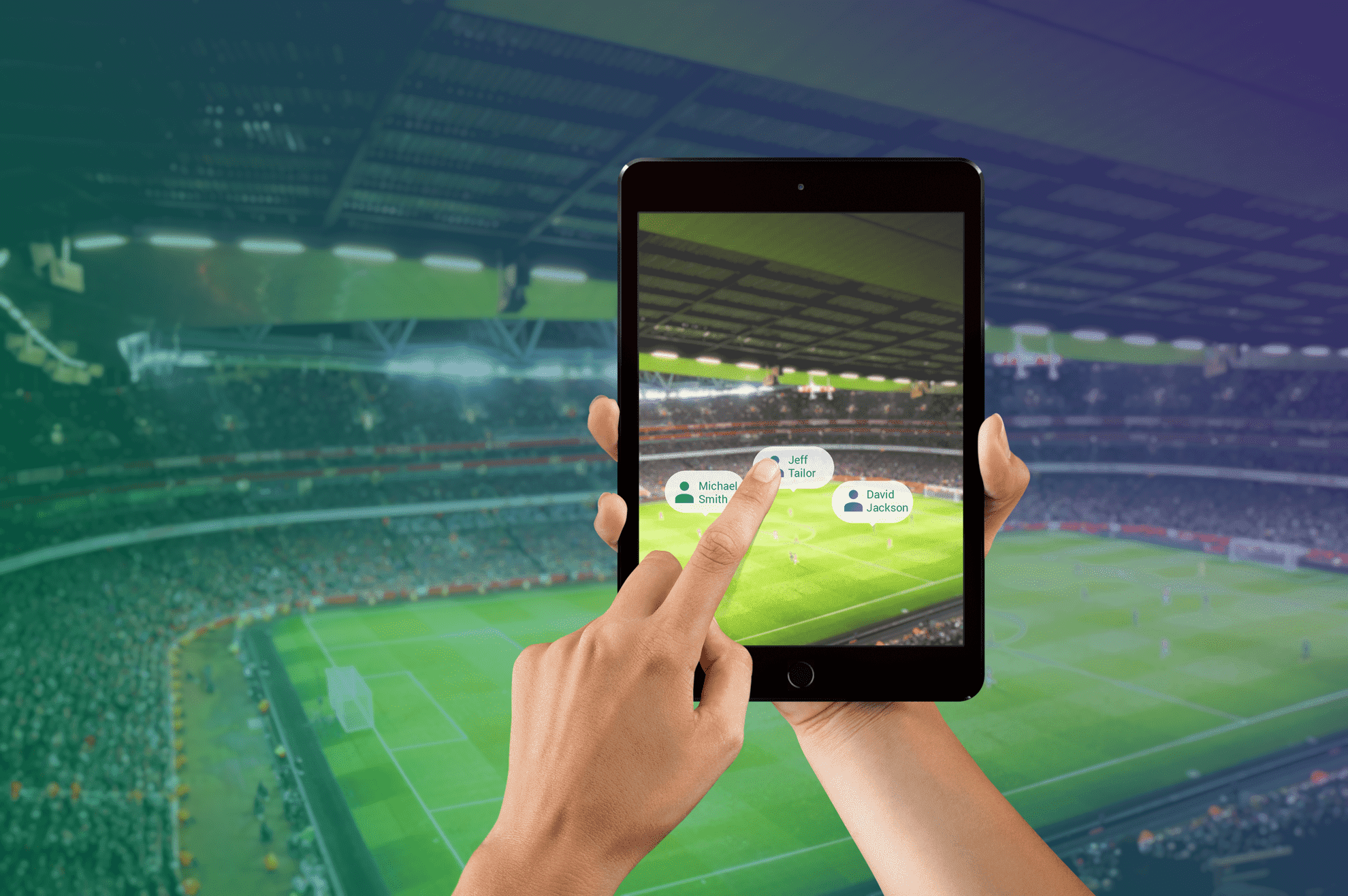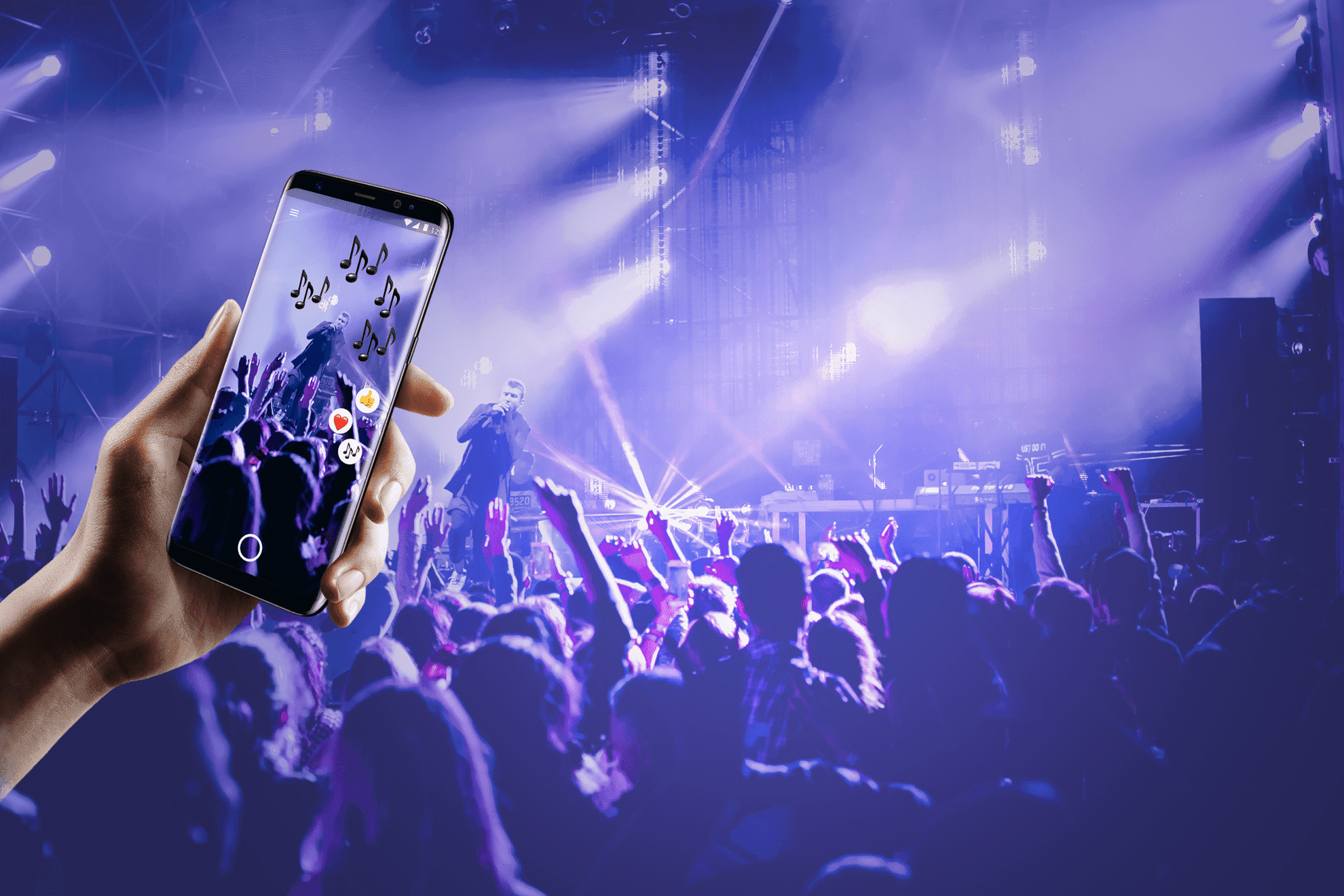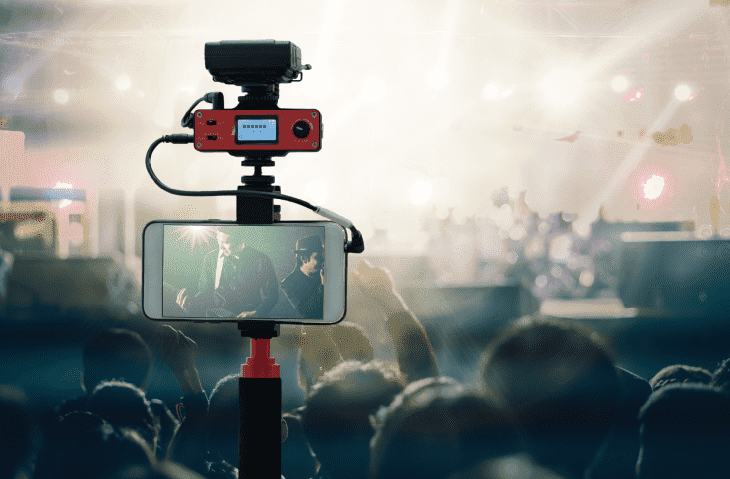Last update: 06/25/2022
Virtual reality is a buzzword that has been going around for years even outside of Star Trek conventions. But a little lesser-known type of VR is augmented reality, also known as AR.
While 70% of Americans do not know what augmented reality is, nearly 46% of them have used it in one form or another.1 Some of the most well-known examples are Pokemon Go, a popular mobile AR game, and Amazon’s ability to let you “view” furniture in your apartment or clothing on your person before purchase. Pokemon Go hit 1 billion downloads in 2019,2 which is 14% of the world’s population. If that many people are willing to download a mobile AR game, it’s entirely possible that they’d download an augmented reality app to improve their event experience.
Augmented reality (AR) is a rapidly growing technology that is being used across various sectors, including marketing, manufacturing, and agriculture. Here are some statistics related to AR:
- By the end of 2023, there will be 1.4 billion AR device users.
- The AR market is valued at over $31 billion, and AR revenue is projected to exceed $50 billion by 2027.
- Around 3 in 4 adults under the age of 44 are aware of AR.
- AR-based shopping encourages almost half of all consumers to spend more.
- The AR & VR market is currently worth $31.12 billion, and revenue is predicted to grow at a CAGR of 15.6% through 2027.
- Mobile AR market revenue is expected to top $21 billion in 2023.
- 70% of technology leaders anticipate that the AR market will surpass the VR market in revenues.
- AR ads are enabling brands to bring their products to life right in front of consumers.
- The travel, automotive, and entertainment industries are expected to see big benefits from augmented reality.
- AR glasses hardware and software revenue is expected to reach $6.8 billion by 2023
- The AR space is set to grow at a compound annual growth rate (CAGR) of around 41.5 percent at $461.25 billion up to 2030.
These statistics show that AR is a rapidly growing technology that is being adopted by consumers and businesses alike. AR-based shopping experiences are leading to increased sales and customer satisfaction, and the AR market is expected to surpass the VR market in revenues. As AR technology continues to evolve, it is likely that we will see even more innovative uses for this exciting technology.
Future of Augmented Reality for Events
Augmented reality (AR) is a technology that combines virtual elements with the real environment to provide an interactive and immersive experience for attendees. AR can create a real-life experience and allow every user in the room to experience the same and see similar images, making it a promising technology for events. Here are some statistics related to augmented reality for events:
- Sporting events can benefit from augmented reality by providing real-time information on players, statistics, scores, and replays of key plays. In addition, interactive experiences can be created for spectators, such as virtual games that are superimposed on the playing field.
- 83.1 million consumers in the US use AR monthly, and AR usership is expected to grow to 17% by 2022.
- AR is increasingly being used at events to provide immersive and interactive experiences for attendees. AR can be used for product visualization, to display products in 3D without physically having them, maps and navigation, to provide interactive maps to guide attendees, and interactive entertainment to provide AR games and activities.
- According to a survey conducted in 2020, 57% of users say they're more likely to buy from a brand offering AR, and 94% of business leaders say “fun” is the main reason people engage with AR.
- The AR market is valued at over $31 billion, and AR revenue is projected to exceed $50 billion by 2027. The mobile AR market revenue is expected to top $21 billion in 2023.
These statistics show that AR is a promising technology for events, with the potential to provide interactive and immersive experiences for attendees. AR can be used to provide real-time information, interactive maps, and games, and can increase engagement and sales. As the AR market continues to grow, it is likely that we will see even more innovative uses for this exciting technology in the events industry.
Both mobile AR and smart glasses are projected to top 2.5 billion installed base and $70 billion to $75 billion by 2023.3
Augmented reality is offering new ways to immerse audiences in a variety of events, and offers live event organizations unique ways to create brand-loyal customers.

What is Augmented Reality?
Augmented reality is pretty similar to its cousin virtual reality, but with a notable exception.
Rather than immersing a user completely in a different environment or reality, augmented reality adds to the environment around a user. Thus, it augments, or changes, a user’s current environment.

The augmented part comes from adding sensory elements such as visuals and sounds, which are typically laid over a camera screen or other display apparatus. These augmenting elements are usually experienced via a tool, such as a user’s mobile phone or AR-enabled glasses.
This creates an illusion that holographic content is part of the world around the user.
How is AR Being Used in the Live Event Industry?
Sports
Augmented reality is very visible within the sports industry.
Those viewing the game at home are probably familiar with a live stream of the field, but with augmented reality elements interposed on top of the image. The augmented reality elements often display player’s positions, highlights plays, or other information.

For those in the stadium, augmented reality can point them to concessions, bathrooms, merchandise stores, or other points of interest. The AR display can also visibly show information regarding the game a viewer is watching, similar to how a broadcaster provides stats and background information for players and teams.
Marketing is another example of sports AR. Season ticket holders or other types of attendees can take pictures with their favorite players with AR, get information via an AR marker, or even display branded photos on social media sites using team flags or other virtual paraphernalia.
Concerts
With live music ticket sales set to exceed $25 billion by 2023,4 it’s clear that seeing a beloved band live is a highly in-demand experience. Between the live music, band performances, pyrotechnics, and the ambiance of a festival, it doesn’t seem like there’s much one can do to improve up on such an experience—or does it?
Augmented reality has been used by some of the biggest bands and to a mind-blowing extent to impress fans in numerous ways.
The Irish band U2 used augmented reality during their Experience + Innocence Tour. A giant iceberg was projected onto an 80-foot screen, but those who viewed the screen through their phone could see a giant projection of Bono towering over the audience.

In another real-world example, Maroon 5 teamed up with Verizon and Snapchat to create a live karaoke experience at three of their concerts. Fans could use Snapchat to sing along with songs while recording themselves and posting the videos to social media. While providing a great experience for in-venue participants, it also drives interest in those who didn’t make it to the event, encouraging further ticket sales for future shows.
Augmented reality boosts audience engagement and builds emotional connections with the crowd, which can be especially important for those who didn’t score tickets right next to the stage.
Much like augmented reality in sports stadiums, AR apps can help concert goers navigate a venue. AR apps can also help those who couldn’t make the show! Live Nation integrated augmented reality features with select festival applications, which helped those stuck at home get a taste of the festival experience. This encourages potential attendees to seek tickets for the next event so they can experience it firsthand.
Art and Theater
Theater is always looking for new ways to make its content more immersive for audiences. Virtual and augmented reality are the perfect solutions to bring audiences right into the performance.
ARShow is a social augmented reality streaming platform that enables audiences to experience mixed reality together, using one operating system. With this method, AR content can be synced to an unlimited number of devices.

K’s National Theater launched an Immersive Storytelling Studio in 2016 to explore how augmented reality and virtual reality can enhance audience experience. In 2015, they staged a retelling of Alice in Wonderland using digital projects and VR to draw viewers into the story.
CoLab is another British theater company using augmented reality to pull viewers in. In an attempt to fight viewer distraction and obsession with cell phones, the company makes a viewer’s mobile phone part of the experience. Using their phones, audience members unveil digital clues and track a spy through London, and become part of the performance.
What are the Benefits of Using AR at Your Event?
Augmented reality can bring a number of benefits to your live event.
| Real-time information. AR apps supply users with relevant information in real time. Users can interact with the app to retrieve additional details as they are desired, or even be nudged in the right direction with related details they might not have thought of. | |
| Easy visualization. Users can "see" a product or information in a personalized way. Whether in the home or at a venue, they can get an up close look at a celebrity, navigate a location, or be presented with new options that allow them to create custom experiences. | |
| Unique user experiences. As already described above, AR can help users in a crowded location feel like they are uniquely interacting with an athlete, singer, or actor. AR makes for great social settings, so users can share what they’re experiencing. This works wonderfully for events. | |
| Improve brand awareness. People love new gadgets and applications. And when you’re on their phone, your brand is right there in front of them the next time they’re curious about new events. You can also survey post-event feelings and reactions, or present attendees with new offerings at a later date. | |
| Competitive differentiation. Augmented reality is one of many ways to stand out in a saturated and noisy marketplace. By being able to offer a personalized and customizable experience for the unique user, brands are telling customers that they are on their level. |
Softjourn’s Experience with AR
We created a proof of concept (POC) for an augmented reality application that would work easily with many different kinds of events. From adding additional characters to stage plays, to enabling fans to meet their favorite athletes without needing to book a busy schedule, there are a number of applications for our solution.
For our POC, we decided to bring the Big Apple’s web-slinging crime fighter, Spiderman, into our Ukrainian R&D Center. Fortunately for Peter Parker, he never needed to leave the U.S.! All we had to do was tap into native iOS functionality using ARKit, SceneKit, and Adobe Mixamo to apply animations to an existing 3D model.
The POC generated an interactive and animated 3D model that overlaid the environment around it. Additional interactivity is possible by allowing users to tap the screen to trigger audio or text.
Check it out for yourself:
Conclusion
Many AR ideas have already been realized in the live event industry space, but what we want to hear about are yours! Let’s chat about how AR can be used to enhance your event and excite your customers.
Headquartered in Silicon Valley, California, with R&D Centers in Ukraine and Poland, Softjourn, Inc. is a global technology services provider that finds custom solutions for our clients’ toughest challenges.
Our 200+ employees skillfully evaluate, identify, and plan innovative, creative solutions. We become a trusted partner by proactively collaborating on all design, build out, and deployment.
Contact us to give life to your ideas!



